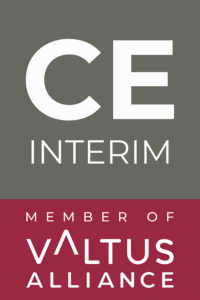Build or buy? It’s a question that keeps private equity (PE) executives awake at night. At first glance, it’s a straightforward choice: build something new in-house or acquire an existing solution externally. But the true costs are often hidden, making this decision much more complex.
Given that 70% to 90% of acquisitions fail due to underestimated integration issues, cultural mismatches, or unforeseen operational complexities, it’s clear that the stakes are high.
This article explores the hidden costs and strategic implications of build vs. buy decisions, particularly for private equity firms navigating growth in global markets like Central & Eastern Europe and the Middle East.
The Classic Build vs. Buy Debate: Overview
“Build” typically means developing solutions internally, customizing precisely to your needs. “Buy” involves purchasing an existing company or product. Although there’s a third option—partnering—this article focuses squarely on build vs. buy.
For PE firms, the build vs. buy decision is especially crucial. With finite investment horizons and pressure for rapid value creation, the stakes are incredibly high. Every PE-backed CEO eventually faces this dilemma.
Hidden Financial and Time Costs
If You Build: Ongoing Costs and Delayed ROI
Building internally might initially appear cost-effective. However, hidden expenses often spiral out of control. Companies frequently underestimate the true costs of maintenance, upgrades, and technical debt—a silent cost multiplier. A “quick” internal project can become a resource drain, delaying the time-to-market significantly.
For instance, Klarna’s decision to build internal CRM and HR systems resulted in productivity loss and slowed growth, negatively affecting their competitive positioning.
If You Buy: Integration and Premium Price
Buying externally carries a premium upfront cost. Yet, it’s the post-deal integration that truly reveals hidden expenses. EY’s analysis of 229 deals uncovered that integration costs typically add 1–4% to deal value, while tech integrations average even higher at 5.5%.
Costs like system migrations, training, and process alignment rapidly add up, eroding anticipated returns. Often, these integration expenses aren’t fully recognized during due diligence.
Build vs. Buy Decisions: Key Factors and Hidden Costs Compared
| Factor | Build (In-House) | Buy (Acquisition/External) |
|---|---|---|
| Upfront Cost | Lower initial outlay (mostly internal resources), but significant ongoing development and maintenance costs. | High initial outlay; includes purchase price premium and immediate licensing fees. |
| Time-to-Value | Slower deployment—development cycles can take 12–18 months or more, risking lost revenue and market share. | Faster market entry—immediate access to existing products, teams, and customers. |
| Hidden Costs | Internal resource diversion, technical debt, talent recruitment and retention, project delays or failure. | Integration expenses averaging 1–4% of deal value, cultural alignment challenges, redundancies, and retraining costs. |
| Long-term Impact | Potential for tailored solutions offering proprietary competitive advantage if executed well. | Rapid growth potential through scale and market consolidation; risk of overpaying and failing to achieve expected synergies. |
Operational & Execution Risks
Execution Pitfalls
Whether you build or buy, operational execution is pivotal. Internally developed projects risk spiraling due to scope creep, insufficient resources, or technical complexity, often leading to “technical debt.” On the acquisition side, system incompatibilities, redundant roles, and integration mishaps can disrupt operations, diminish morale, and lead to productivity loss.
Don’t Overlook the Human Factor
People and culture play a critical, yet underestimated, role. Cultural mismatches post-acquisition contribute heavily to the 70-90% M&A failure rate. Additionally, approximately 33% of key employees leave within the first year post-merger due to poor integration.
Internally, building new solutions can overstretch existing staff, creating burnout and turnover—particularly when projects expand unexpectedly in scope and complexity. Both scenarios require proactive mitigation: comprehensive change management, retention incentives, or interim leadership to ease transitions.
Strategic Alignment & Long-Term Value
The strategic alignment of your build vs. buy decision with your core competencies and investment goals is critical. Misalignment results in strategic drift, diluting focus and potentially jeopardizing value creation.
If your PE firm’s investment horizon is limited, an ill-advised “build” that yields returns beyond your timeline, or an overpriced “buy” with unjustified synergies, could significantly harm your returns.
Remember Blockbuster’s infamous misstep of building its own streaming service too late, bypassing the chance to buy Netflix? Strategic miscalculations like this underline the necessity of context-specific decisions tailored to your value creation plans and investment timelines.
Build or Buy? Key Questions to Ask:
- Is this capability core to our business?
- Do we need immediate solutions for rapid market entry?
- Can our internal talent manage additional project burdens without harming core operations?
- Have we accurately assessed the five-year Total Cost of Ownership (TCO)?
- Will the chosen path support or strain our existing company culture?
- Could we pilot or partner initially, validating our approach before fully committing?
Case in Point: Klarna’s Build Gamble
Klarna decided to internally build their CRM and HR systems. The decision proved costly, creating delays and internal disruptions, ultimately affecting market competitiveness. Klarna’s example underscores the risks of underestimating hidden costs in internal builds.
Case in Point: An Acquisition Gone Awry
In a hypothetical but representative scenario, a PE firm acquired a promising regional business in Eastern Europe. Underestimated integration costs, significant cultural clashes, and an exodus of key talent quickly eroded the anticipated value, ultimately forcing a costly and disruptive turnaround.
Integrating Interim Solutions: Best of Both Worlds
Interestingly, the choice between build and buy doesn’t have to be strictly binary. Leveraging interim management—such as interim CTOs, integration managers, or interim CEOs—provides a viable hybrid path, offering flexibility and expertise without long-term commitments.
Companies like CE Interim specialize in placing seasoned interim executives who rapidly bridge skills gaps, execute integrations efficiently, and accelerate internal project timelines.
In regions like Central & Eastern Europe and the Middle East, CE Interim’s experienced leaders offer invaluable local insights, facilitating smoother integrations and rapid operational alignment.
Conclusion: Making the Decision & Role of Interim Solutions
Ultimately, the build vs. buy decision isn’t merely a cost consideration; it’s a strategic evaluation involving speed, cultural fit, strategic alignment, and value creation.
Increasingly, PE firms recognize that securing experienced hands at critical junctures significantly mitigates hidden risks and maximizes strategic outcomes. CE Interim’s interim executives—CTOs, CEOs, CFOs, and integration specialists—can navigate these complex choices, ensuring your strategic investments turn into clear successes.
Ready to transform your build vs. buy decisions into value creation opportunities? Contact CE Interim today for expert interim management solutions tailored to your unique needs.





